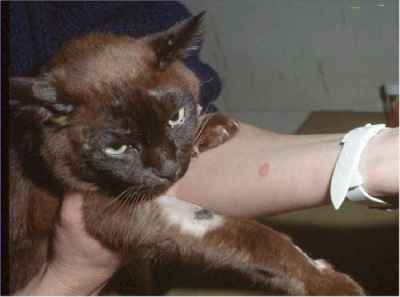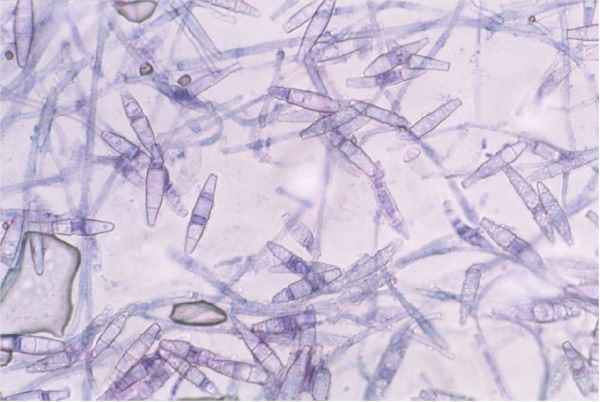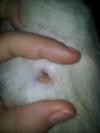Symptoms and Treatment of Ring Worm Cats
"Ring worm cats is a fungal infection, caused by different species of “Dermatophytes”, also termed as “Dermatophytosis” collectively. In cats Microsporum canis causes almost all cases of ring worm, while other species of Trichophyton and M. gypseum may also cause ring worm in cats but is less common. Kittens are more susceptible, while this condition is characterized by focal hair loss especially at the extremities, i.e. near the head, neck and nails etc. Scaling and crusting of the skin is common, while in later stages skin itch and development of generalized dermatitis is frequent. Diagnosis may require culturing the fungus to clinically confirm either a cat is a “carrier” or “infected”. Treatment may involve shampooing with anti – fungal shampoos, or use of anti – fungal drugs. Use of anti – fungal drugs in cats has side effects."
Cause of Ring Worm Cats:
Ring worm is also called “dermatophytosis” which is caused by group of fungal species called, “Dermatophytes”. Microsporum canis is major causative dermatophyte which causes almost 98% of all cases of ring worm in cats. M. canis is a single cellular, spindle shaped fungi, which ranges 100 – 160 um in size.
Signs and Symptoms of Ring Worm Cats
The clinical appearance of ring worm cats is different from what appears in dogs and humans. The name suggests ring shaped alopecia (hair loss), but in cats it is not the same, clinical alopecia or loss of hair is sporadic, focal and irregular in shape, mostly seen at the extremities and tips, concentrating in areas of the body such as the ear, nostril, nails, neck and tail.

Picture of Cat Ring Worm
and Ring worm on a Human Arm
Kittens are considered more susceptible to infection as compared to adults, as adults groom themselves regularly thus reducing the chance of ring worm. Similarly potentially ill or immuno depressed adults are more susceptible.
In later stages, lesions on the skin become scaled and crusts develop, in most cases, development of dermatitis results in hardness of skin, itching and generalized illness.
Generalized infection of ring worm cats is represented with ulcerative nodules on the skin and is very hard to cure.
Diagnosis of Ring Worm in Cats:
In cats observation of clinical symptoms in making a diagnosis are not sufficient, as the typical sign of ring worm in cats i.e. a ring shaped hair loss is usually not observed, therefore along with clinical signs and history, laboratory testing is considered must.
A procedure involving an apparatus called a “Wood’s Lamp” can be helpful in diagnosing ring worm in cats, but is never helpful in differentiating it from other fungal infections. It can be said that the Wood’s Lamp technique is only a screening tool for ring worm in cats. A fungal culture may be required for differentiating ring worm in cats from other cat skin problems such as bacterial dermatitis and mange.
Treatment of Ring Worm in Cats
Conventional Treatment of Ring worm Cats:
In short haired cats, ring worm is mostly self resolving; and usually does not require any systemic treatment at all. Regular grooming, bathing and using a mild anti – fungal shampoo containing Enilconazole is enough in such cases. It is highly recommended and more effective to apply a topical application of miconazole or clotrimazole after a regular bath instead of a whole body wash with an anti–fungal shampoo.
In severe cases, a systemic treatment plan may be indicated. The prescription medication griseofulvin is highly recommended in daily divided doses limited to 20 – 50 mg/Kg B.W until complete recovery is achieved. Higher doses of griseofulvin may cause severe gastrointestinal upset and bone marrow suppression in cats, thus it requires sensitivity testing to see how a specific cat reacts to the medication.
Another effective and safe option to treat ring worm in cats is the use of terbinafine at dose rate of 30mg/Kg B.W and itraconazole at dose rate of 5 – 10 mg/Kg B.W, but neither of these drugs are included in “legally approved drugs” (LAD) for domesticated animals.
Homeopathic/Natural Treatment for Cat Ringworm
A safe home natural treatment option for feline ringworm available without a prescription is a lime sulfur based product such as Naturasil for Pet Ringworm. This product uses concentrated Lime-sulfur, which is approved for safe use on ringworm fungi by the FDA and EPA. This combined with a herbal and homeopathic gentle shampoo such as the one available from Naturasil will safely treat cat ringworm without any side effects.
You should see improvement after the 1st treatment, with 1 to 4 weeks of treatment usually required depending on how your cat responds. Also note that ring worm is contagious to other pets and humans on contact. Be sure to wear gloves when treating or bathing your cat.It can be helpful to continue treatment 1x a month to prevent future cases.
Of course, consult your veterinarian for the best treatment option.
Removing Ringworm Spores from Your Home
Fungal spores could be spread throughout the area where your cat roams causing a reoccurence of feline ring worm after treatment. Since ring worm is a disease that can spread from cat to both humans and other animals, it may be helpful to treat the home and kill any spores in areas where the cat lives. Cat ring worm spores can remain in a cats (and your) environment for up to 18 months.

PIcture of Cat Ring worm spores under MIcroscope
A safe way to do this is with a product that contains benzalkonium chloride such as Benzarid Spray. This product will remove cat ring worm spores from bedding, floors, furniture, car seats, chairs etc. It will kill ringworm without side effects.
References:
The Merck/Merial Manual for Pet Health
Have A Question about Ringworm in Cats?
Do you have a question for our veterinarian about a cat ringworm problem? Share it and our veterinarian will answer it for free!
If possible, please include a picture. Seeing the skin problem can help us improve suggestions made. Please include information such as breed, age, sex, history, changes in behavior, products used etc.
We will try and respond as quickly as possible. If you have an urgent question we suggest using this online veterinary cat answer service that is staffed by vets and available 24 hours a day.
What Other Visitors Have Asked and Vet Responses
Click below to see contributions from other visitors to this page...
Could this be ringworm? Not rated yet
Reader Question on Skin Sore Followed By Suggestion From Our Vet
My 6-month-old male Ragdoll cross has a scabby sore on his shoulder blade. Most days …
